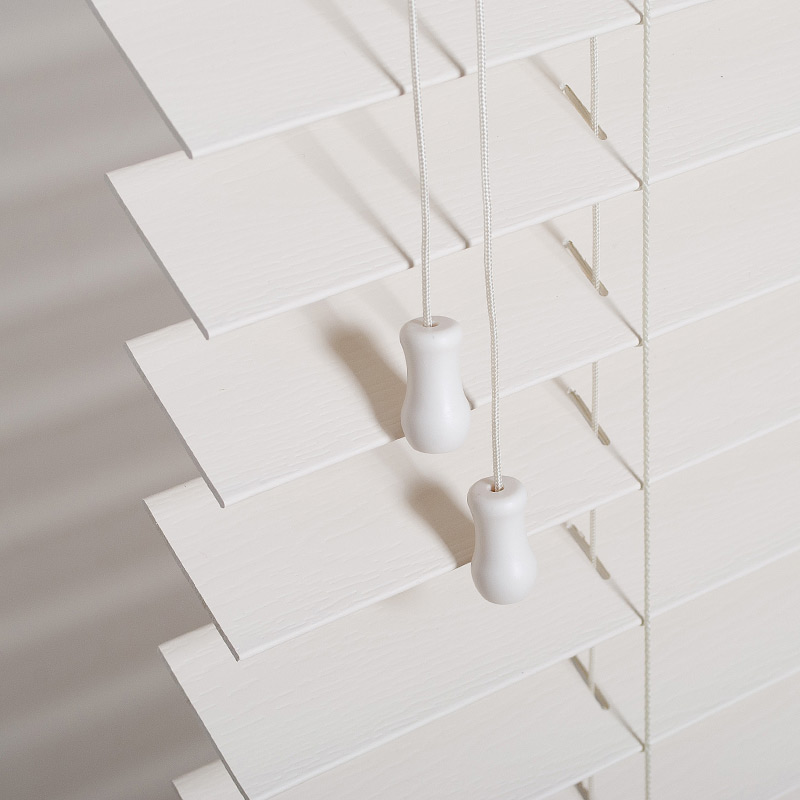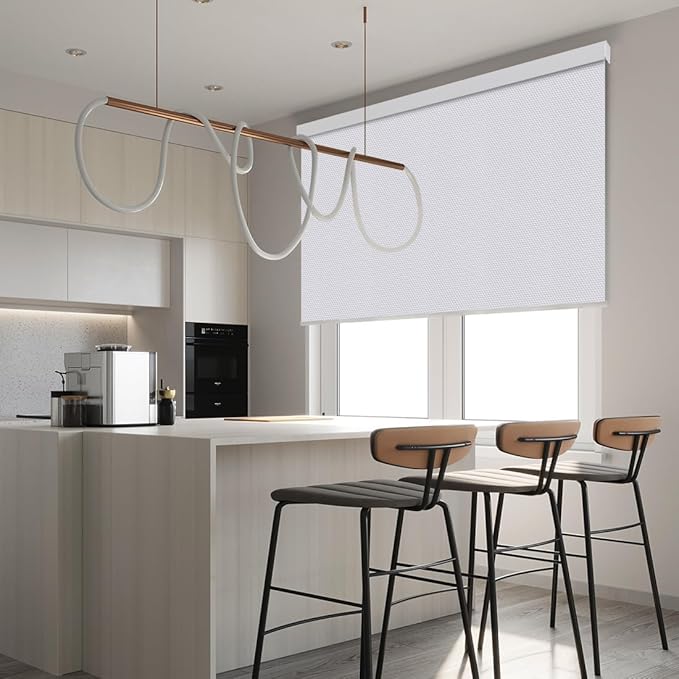Beginners Guide To Choosing Window Treatments
Date:
It is no secret that choosing window furnishings is a difficult task as there’s so many options and variables to consider. Should they be phe or recess mounted, hung on a track or rod, or what should I even choose? I’ll go through the pros and cons of each window furnishing type as well as my top tips so you can find the perfect fit for your home.
Table of Contents
ToggleTypes of Window Treatments
Window furnishings can be broken down into three main categories: blinds, curtains, or shutters. For blinds, you can get roller, Roman, vertical, Venetian, or honeycomb. While for curtains, the main types are sheer, blockout, or room darkening. Curtains can also come lined or unlined, which we’ll talk about later. As for shutters, plantation shutters are the most popular at the moment. It is understandable that choosing the right ones for your space is difficult as there are just so many types available on the market.
Pros and Cons of Blinds
Roller Blinds
Roller blinds have a simple and modern look; they are great for contemporary homes. What is so great about them is that they’re so versatile and can practically be used in any room. Roller blinds come in a wide range of fabric such as flat, textured, patterned, light filtering, or blockout and can either be face or recess mounted. Recess mount is generally preferred if you want a less obtrusive look, but they tend to have more light leakage than face mounted blinds. On the other hand, face mount is much more visible but can also be used for decorative purposes and to cover unattractive window frames.
With so many options, roller blinds give you great flexibility to alter not only the look of your space but also the level of light and privacy in your room. Double roller blinds that feature both blockout and light filtering fabrics are really popular at the moment as they allow light to stream in during the day while having total privacy at night. As for thermal insulation properties, it really depends on whether the blinds are front or back rolled and also face or recess mount. Face mount generally helps to improve insulation but also varies depending on the fabrics used. For example, thick fabrics with tighter weaves are more insulating than loose weave fabrics. There aren’t many cons of roller blinds besides them sometimes looking plain, which is not ideal for more elaborate interior styles. For example, if you’re looking for that soft and dreamy look, curtains may be a better option.
As roller blinds are so popular, there are many low-cost options out there; however, you can also get higher-end designer blinds that are motorized, depending on your budget. This is especially great for places that are hard to reach. They’re also quite easy to install with basic tools at home.
Roman Blinds
Roman blinds provide an elegant, soft, and sophisticated look in rooms as they fold into delicate parts as they’re drawn upwards. They’re usually used as a feature window treatment, especially in traditional or period style homes and are perfect in small spaces like bathrooms, home offices, and hallway windows. Like roller blinds, there is a lot of choice for Roman blinds as they come in a wide range of fabric such as cotton, linen, or polyester, and they can be blockout or light filtering.
The thermal properties of the blinds vary depending on the fabric quality and how accurately they’re installed, so there are no gaps. Roman blinds are often installed recess fit, but there are also ones that are face mounted or installed outside. With these ones, you need to make sure that they’re a few centimeters wider and longer than the window frame; otherwise, light will be leaking in through the sides. One drawback of Roman blinds is that they need to be cleaned a lot more than your average blind as dust quickly builds up on them. I also find that cheaper ones have mechanisms that tend to go wrong and can look messy. Roman blinds are also usually more costly than roller blinds; however, there’s a lot of variability depending on the size of the window and also the fabrics that are chosen. But probably the worst drawback is that as they fold up on themselves, they take up a lot of space at the top of your windows, which means that your natural light source is cut into. But you can avoid this by hanging them up on the wall just above the window frame so you don’t lose that much light. Having said that, one thing I really like is that Roman blinds provide much more impact aesthetically compared to roller blinds, and I find that they’re easier to operate on windows that start from the waist up.
Venetian Blinds
Venetian blinds are casual feeling window treatment that feature horizontal slats which can be tilted or drawn up. They come in many different materials like timber, aluminum, PVC, and vision wood, which is a timber alternative that is moisture resistant and anti-fungal. As the slats of Venetian blinds can be tilted, you can alter the amount of light that enters the room; however, there can be light leakage between the slats when closed. The small gaps between the slats also mean that Venetian blinds are not as insulating as other blinds. They also need regular dusting, which is time-consuming, and at times can look office-like as they’re so commonly used in those settings. If you’re going for the sheer look but on a budget, Venetian blinds are the best alternatives to plantation shutters. Vision wood Venetian blinds can also make for a great choice in high moisture environments like kitchens, laundry, and bathrooms. Like roller blinds, Venetian blinds are quite easy to install with common tools.
Vertical Blinds
Vertical blinds are a very casual window furnishing that are a lot like Venetian blinds but are vertical instead of horizontal, as the name suggests. They’re an extremely affordable window furnishing. The main benefit of vertical blinds is they can give the illusion of height, especially when used over small windows. They’re usually used over sliding glass doors or floor-length windows as they can be drawn open to the left or right. The main disadvantage of vertical blinds is that they can be noisy if it is windy as they swing around and collide with each other. Some materials and cheaper products can also get tangled and break quite easily. Like Venetian blinds, they’re not as insulating as other blinds due to the gaps; light leakage can also be an issue.
Honeycomb Blinds
Honeycomb blinds provide a sleek, clean, and crisp look, which is great for contemporary homes. Out of all the blind types, they’re one of the most insulating as they feature a pleated hexagonal design with air pockets that slow down the transfer of heat. The motorized version works really great if you have skylights, as it allows easy control and thermal insulation. Honeycomb blinds can also dampen noise, which makes them a good choice if your window looks out into a busy road. Compared to other blinds, honeycomb blinds are more difficult to clean as they can collect dust in the air pockets and stain. In terms of price, honeycomb blinds are one of the more expensive blind options; they’re more pricey than roller, Venetian, or vertical blinds, but they’re not as expensive as shutters.
Types of Curtains
Generally speaking, there are three types of curtains: sheer, room darkening, and blockout. They all provide different levels of light control. Sheer curtains are one of my favorite choices as they gently diffuse light and create a soft and cozy feel. These are ideal for adding texture to a room. The main downside of sheer curtains is that natural fabrics like linen are expensive and require some care, and they also don’t provide great insulation. That being said, you can put a blockout roller blind behind a sheer curtain to better insulate the room and increase privacy. There’s also the option to go for part natural material like part linen and part polyester, which is one of my favorite options as it provides the look and texture but is much more durable with much less care and maintenance required.
Blockout curtains are usually seen in bedrooms as they provide maximum privacy and darkness. One of the main advantages of blockout curtains is that they are quite insulating as they are thick and therefore energy saving. They also help with noise reduction to a certain extent. In terms of installation, curtains offer a wide range of variety as they can be track or rod mounted and there are also a wide range of heading styles. I particularly like asphal curtains where you fix the track into brackets, insert hooks into the curtain heading tape, and then hang the curtain into the track runner back and forward to create the S shape; they retain a perfect S shape no matter what you do to them.
Many people opt for a double rod or double track to layer both sheer and blockout curtains, which provides you the flexibility during day and night. In between, you also have room darkening curtains; they’re generally made of thicker fabric like cotton or velvet and diffuse around 60 to 95% of light depending on color and material.
Related Posts
 Blog
BlogHow to Shop for Window Shades
Hey there! Now I am here today to help you with what seems to be one of the trickiest parts...
 Blog
Blog5 Rules For Hanging Curtains & Common Mistakes to Avoid!
A beautiful set of curtains has the power to transform a space into a stunning one. Unfortunately, even the most...
 Blog
BlogBlinds vs Curtains: Which to Choose?
Before you finalize the purchase of either, consider well the look you're trying to achieve. Factors such as cost, ease...
